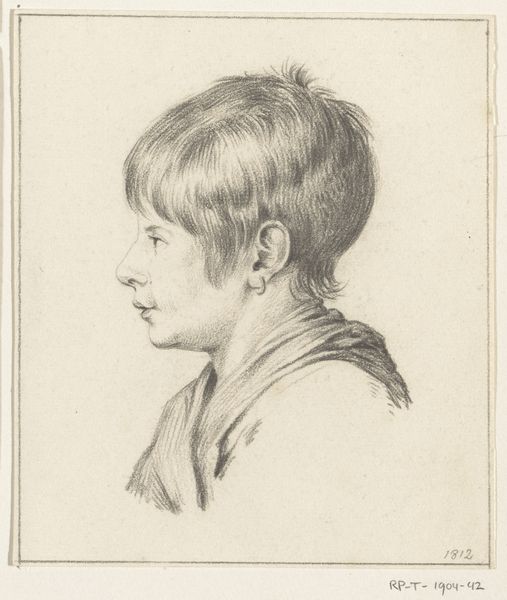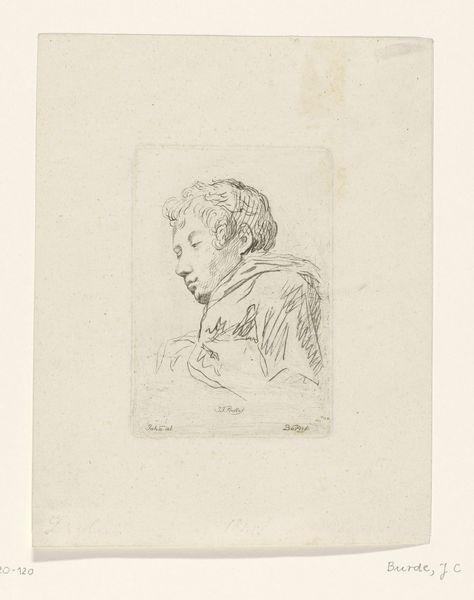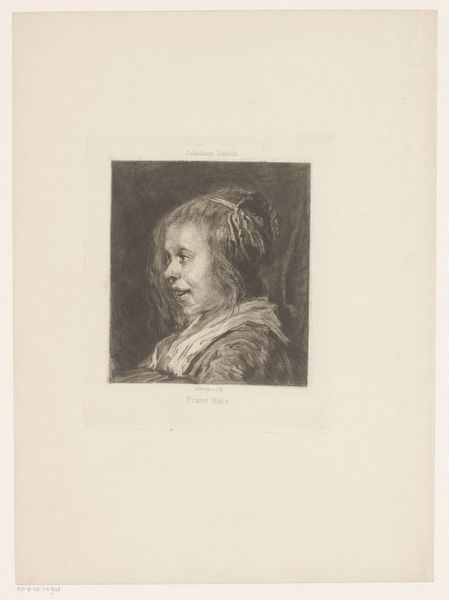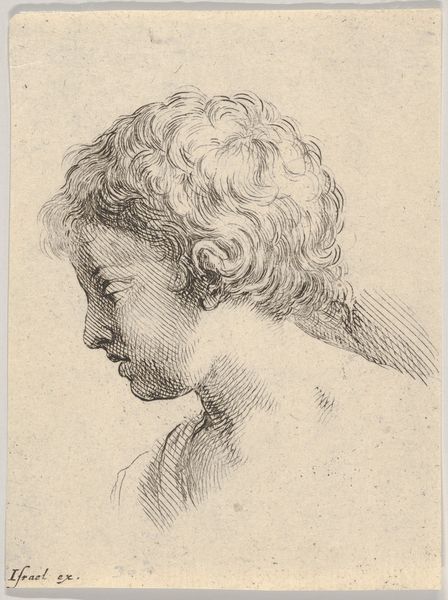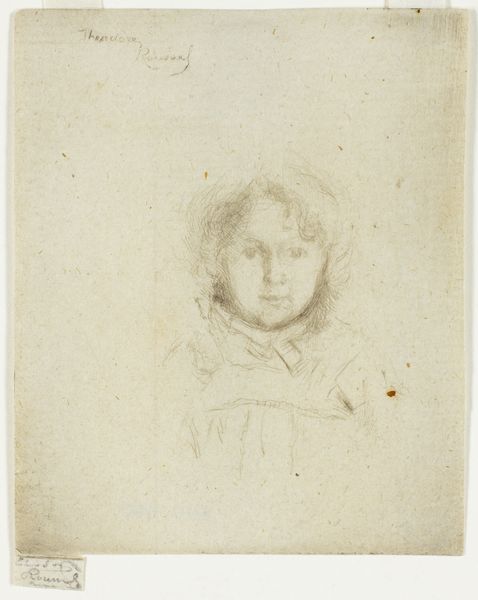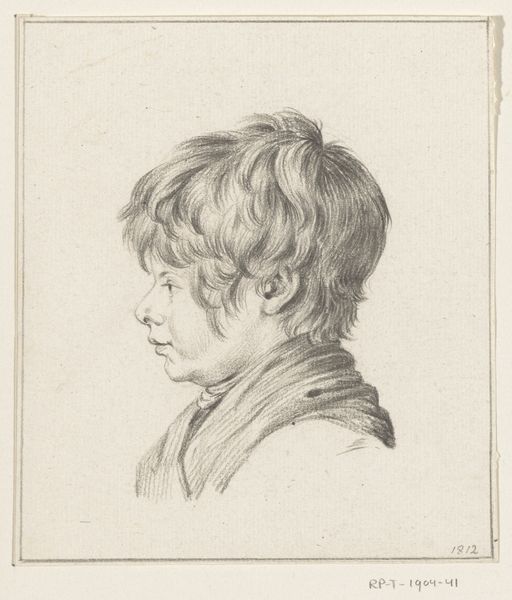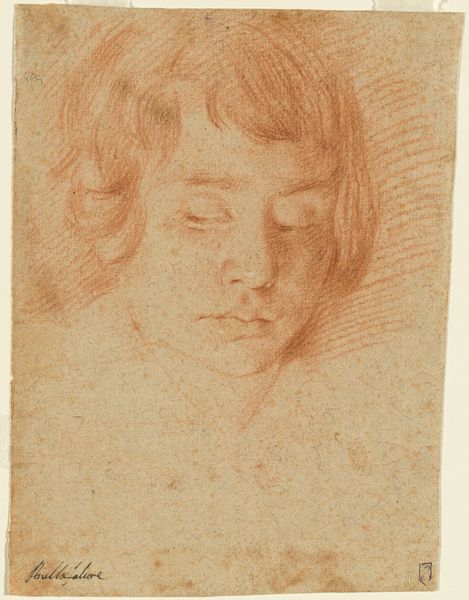
drawing, pencil
#
portrait
#
pencil drawn
#
drawing
#
pencil sketch
#
etching
#
pencil drawing
#
pencil
#
sketchbook drawing
#
pencil work
#
academic-art
#
realism
Dimensions: height 135 mm, width 112 mm
Copyright: Rijks Museum: Open Domain
Daniël Batavus Voorman sketched this head of a woman with sanguine chalk. The headscarf, a seemingly simple piece of fabric, speaks volumes. Since antiquity, head coverings signified modesty, piety, or social status, but the emotional weight of this motif persists across cultures and time. In medieval paintings, a similar headscarf might denote humility or mourning, while in Renaissance portraits, it could indicate marital status. Consider how the same motif appears in different guises—veils of grief or markers of religious devotion. The headscarf, in its various forms, becomes a vessel carrying collective memories of loss, reverence, and hidden identities. Here, the woman’s downcast eyes evoke introspection, inviting viewers to delve into their own memories and subconscious associations. In the cyclical progression of symbols, the headscarf resurfaces, evolving and taking on new meanings in different eras, inviting us to remember, reflect, and connect with the past.
Comments
No comments
Be the first to comment and join the conversation on the ultimate creative platform.

